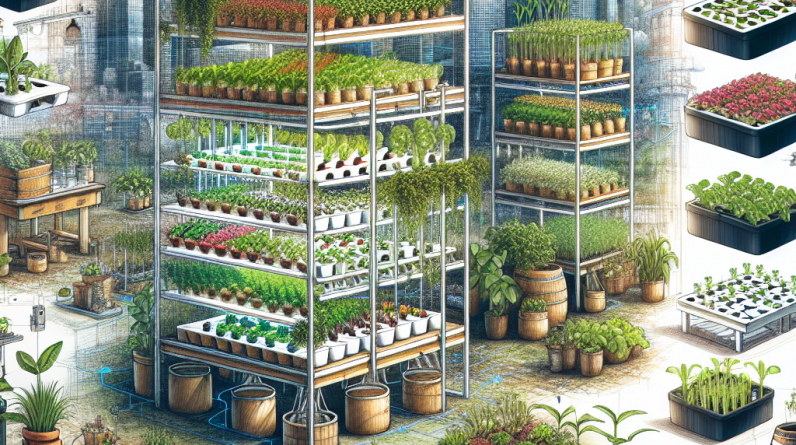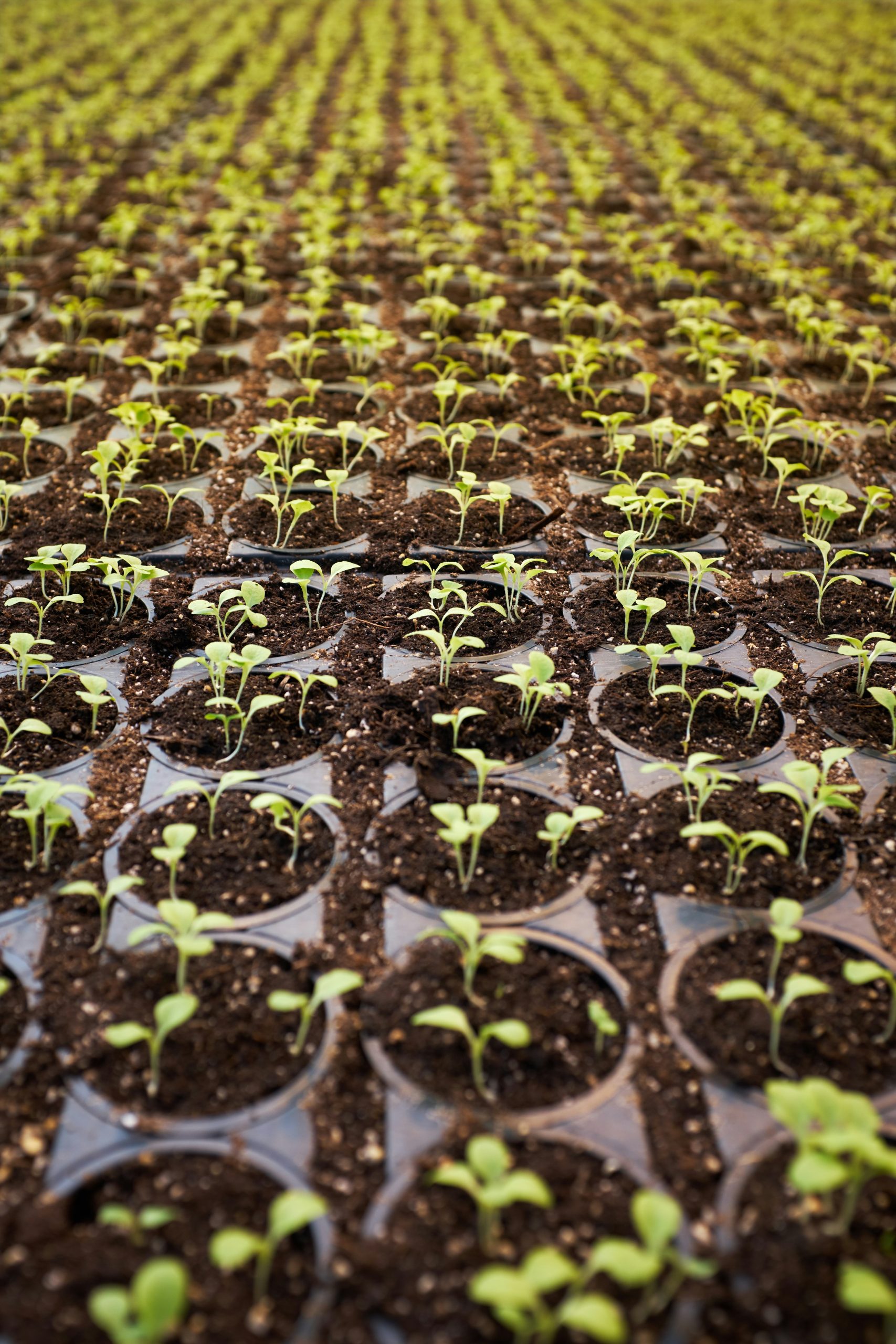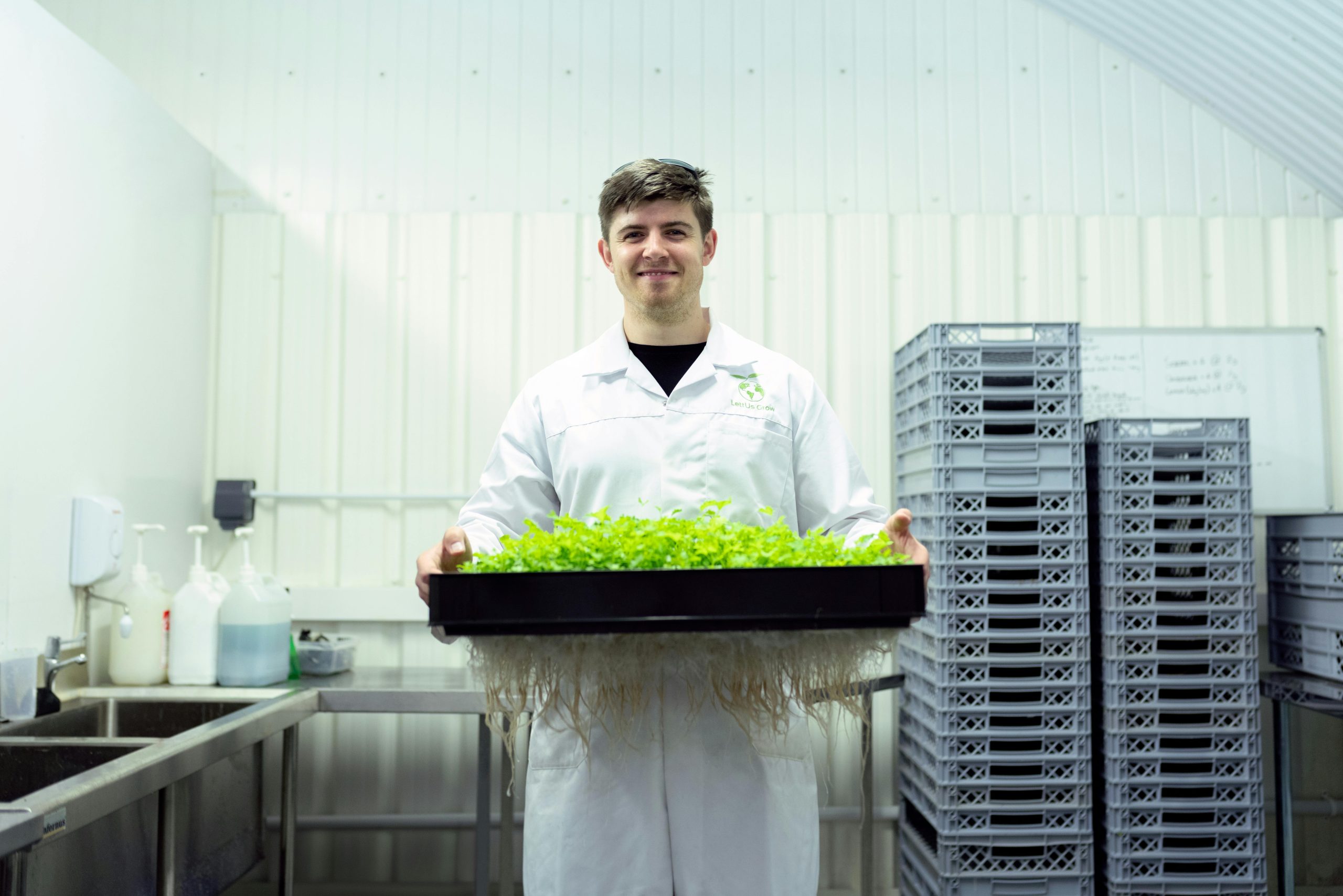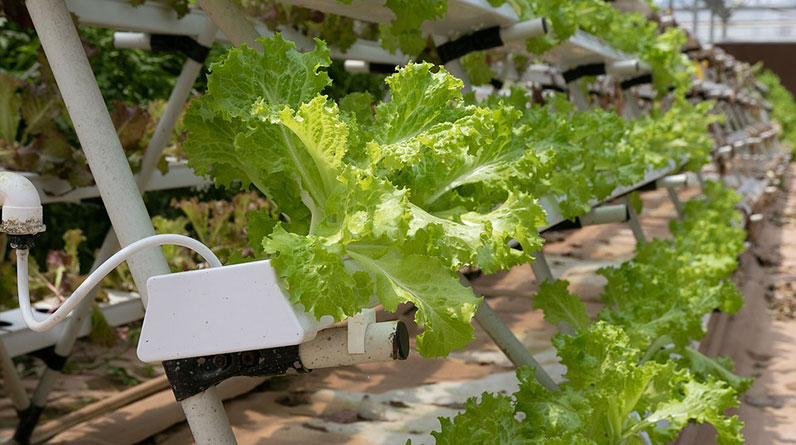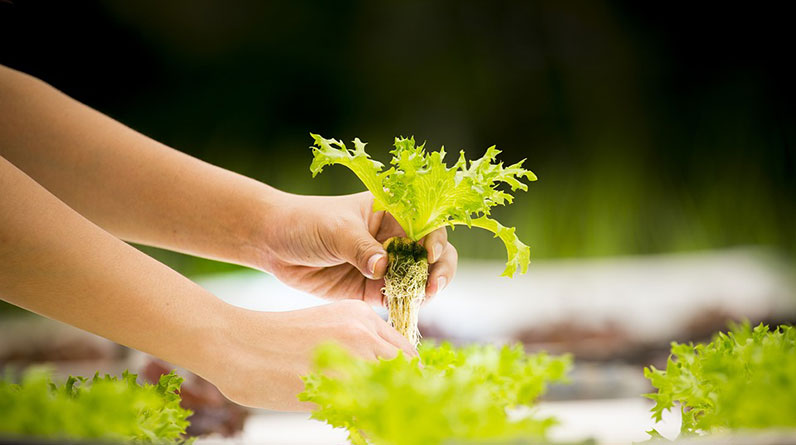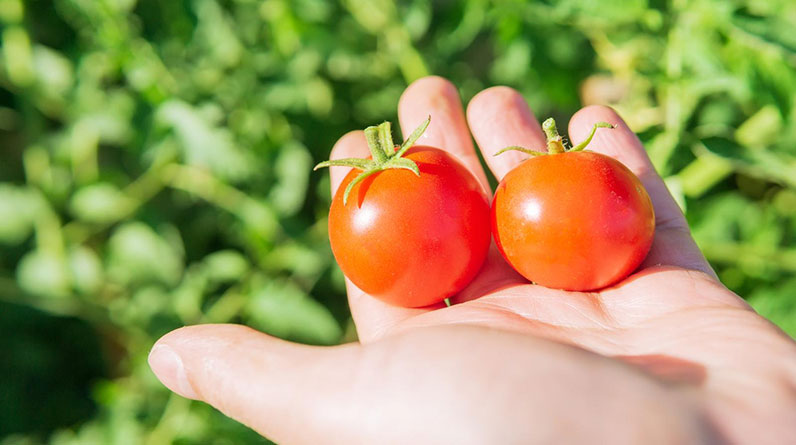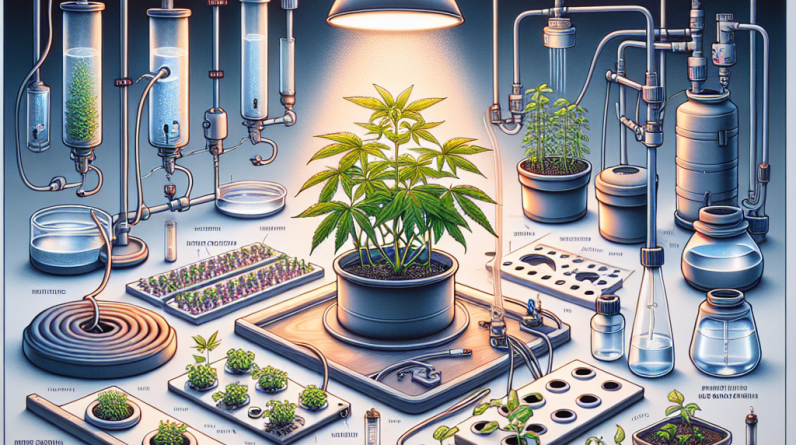
Understanding Hydroponic Systems
What is Hydroponics?
So, let’s start from the basics. Hydroponics is a method of growing plants without soil. Instead, we use nutrient-rich water, allowing the plants to absorb everything they need through their roots. It’s pretty fascinating and a total game-changer for urban gardening!
When I first stumbled onto hydroponics, I was amazed at how efficient it could be. You can grow a variety of plants, from tomatoes to herbs, all in a compact space. And the best part? You can control the nutrients, leading to faster plant growth and higher yields.
This system is not just a trend; it’s a sustainable way to produce food, especially in areas with poor soil quality. Once I dove in, I realized it had opened up an entirely new world of gardening for me.
The Benefits of Going Hydroponic
One of the biggest perks of hydroponics is that it uses significantly less water than traditional gardening. Since the water is recirculated, there’s hardly any waste. Trust me, this is a huge bonus if you’re like me and want to be more environmentally friendly.
Plus, without the need for soil, you can avoid many pests and diseases, making it easier to manage your crops. I’ve noticed fewer headaches dealing with bugs since switching to hydroponics!
Lastly, hydroponics gives you the freedom to grow indoors or in limited spaces. You can fully utilize your apartment balcony or even a sunny window sill. It’s super satisfying to have fresh herbs at your fingertips all year round!
Common Misconceptions
I used to think hydroponics was reserved for scientists or expert gardeners, but that’s not true at all! Anyone can start a hydroponic garden, no PhD required. Just a little bit of curiosity and the right resources is all you need!
Another misconception is that it’s too expensive. While there are some investment options you can go for, you can totally start small. I began with a DIY system I made for under fifty bucks, and it worked just fine!
Finally, I’ve heard folks say hydroponics is only for veggies. That’s totally false! You can grow fruits, flowers, and herbs as well. Honestly, the opportunities are endless!
Different Types of Hydroponic Systems
Deep Water Culture (DWC)
Deep Water Culture is probably one of the simplest systems for beginners. What happens here is that the roots of the plants are submerged in nutrient-rich water, and a pump keeps oxygen circulating. This ensures the plants grow quickly and healthily.
I remember my first experience with DWC. It was a big learning curve, but seeing my lettuce thrive was incredibly rewarding. Just make sure you monitor the oxygen levels; your plants will thank you!
The beauty of DWC is that you can set it up pretty easily. You can use buckets or even large containers, allowing for flexibility in your space. Who knew growing veggies could be so straightforward?
Nutrient Film Technique (NFT)
NFT is slightly more advanced but totally worth the time and effort. In this system, a thin film of nutrient solution continuously flows over the roots of the plants. The roots dangle down into a channel, and it’s a pretty cool sight!
This method allows plants to absorb nutrients while getting plenty of oxygen. I loved troubleshooting my NFT system because it felt like an engaging puzzle to piece together—who can resist a good challenge?
While I’ve seen great results with NFT, it requires more maintenance than DWC. But if you’re up for it, the rewards can be fantastic. You definitely need to keep an eye on the nutrient levels!
Wicking System
If you’re looking for something super low-tech, the wicking system is your best friend. With this method, a wicking material draws up the nutrient solution from a reservoir to the plants. It’s simple, and I love how hands-off it can be.
The coolest part about a wicking system is that it can be set up with just about anything. Even those old plastic bins can turn into a productive garden! I started with a couple of small containers I had lying around and watched as my herbs flourished.
However, this system is best suited for smaller plants, as larger ones may require more nutrients than can be delivered through wicking. But let me tell you, those leafy greens just love it!
Setting Up Your Hydroponic System
Choosing the Right Location
Finding the perfect spot for your hydroponic system is crucial. Think about light! Most plants need at least six hours of sunlight a day, so placing your system near a window or under grow lights is key.
Also, you want your setup to be accessible. Trust me, it’s a lot easier to check on your plants if they’re not too tucked away! I made the mistake of placing mine too far, and it turned out to be a hassle to regularly care for.
Lastly, keep an eye on the temperature. Most plants thrive in a comfortable range, so don’t forget about ventilation if you’re growing indoors. A little fan can work wonders!
Gathering Supplies
Once you have your location sorted out, it’s time to grab your supplies. You’ll need a container, net pots, growing medium, and some good-quality nutrients. On my first shopping trip, it felt like I was gathering ingredients for a magic potion!
Don’t be afraid to explore and shop around. I’ve found great deals both online and at local garden supply stores. Plus, chat with other growers; they often have recommendations that can save you time and money.
Lastly, don’t forget tools! A pH meter can help you keep track of nutrient levels, and a good set of gloves is handy. I learned that the hard way when I ended up with my finger in the gooey algae!
Planting Your Seeds
This is the fun part! After you’ve set everything up, you can start planting. Depending on the system, you may want to start with seedlings or seeds directly. I usually lean toward seedlings since they provide a bit of a head start.
For those starting from seeds, make sure you keep them moist until they germinate. I’ve had more than one seedling not make it because I got impatient. Just chill and let nature do its thing!
Once your plants start growing, it’s important to monitor them closely. I’ve seen plants shoot up overnight, and it’s all about keeping that nutrient solution balanced. Get ready to fall in love with your little green babies!
Caring for Your Hydroponic Garden
Monitoring Nutrient Levels
If there’s one thing I have learned, it’s that nutrients are key to success in hydroponics. Make sure you monitor your nutrient solution regularly; I check mine about once a week. Water alone will not do the trick!
Creating a schedule can help keep track of pH levels and nutrient concentrations. I marked notes in my gardening journal like crazy within those first few months. It all helps in recognizing what your plants prefer.
Also, don’t be afraid to adjust. It’s a learning experience, and it’s okay to tweak things. My plants don’t always thrive under the same conditions as my friend’s, so never hesitate to figure out what works best for yours!
Preventing Pests and Diseases
Pests aren’t just a soil issue; they can reach your hydroponic garden too! Regular checks can help catch bugs before they take over. I’ve learned that a little neem oil goes a long way in keeping my plants free from those pesky invaders.
Diseases can also become an issue with so much moisture. Make sure to keep your equipment clean, and don’t overcrowd your plants. I didn’t realize how quickly mold can overtake things until I experimented a bit too much!
Integrated pest management strategies can help as well. Boron traps, companion planting, and all that jazz can work wonders. My garden has never looked healthier since I’ve implemented a few of these tactics!
Regular Maintenance
Just like any garden, regular maintenance is necessary to keep your hydroponic system thriving. A dedicated weekly schedule really helps in tracking tasks like cleaning, pruning, and adjusting nutrient levels.
I often set out time to check on how my plants are doing and to trim any dead leaves. Trust me; it’s much better to take care of issues early rather than let them snowball into larger problems!
Lastly, keep an eye out for growth rates. If something looks out of the ordinary, don’t hesitate to research! With hydroponics, the more you learn, the more successful you’ll become.
Harvesting Your Crops
When to Harvest
Knowing when to harvest can be tricky, but a little observation goes a long way! For leafy greens, you can start snipping as soon as they reach a desirable size. Just remember to leave enough to aid regrowth!
For fruiting plants, patience is key. I found myself yearning for ripe tomatoes, so I might have plucked a few too early. Lesson learned: let them fully ripen for the best taste.
Your plants will generally give you signals, so it’s essential to watch and learn. The excitement leading to the harvest is totally worth it, and it feels like Christmas when you finally enjoy the fruits of your labor!
The Best Techniques for Harvesting
Harvesting techniques can vary depending on the plant type. Always use clean garden shears to avoid introducing pests or diseases. I learned that one the hard way—sanitation is your friend!
For leafy varieties, snip just above a set of leaves so that they can keep growing. For larger plants like cucumbers or peppers, twist the fruits off carefully. I broke a few stems in my early days; needless to say, I learned quickly!
Make sure to handle everything gently, and ideally, harvest in the morning when your plants are most hydrated for the best flavor.
Post-Harvest Care
After harvesting, take some time to clean up your system. Remove any dead leaves or debris; trust me, it pays off in the long run! Cleaning also helps to keep pests and diseases from returning.
Next, consider rotating your crops. Changing what you grow can boost nutrient levels and prevent any buildup of plant-specific pests or diseases. I love experimenting with new seeds!
Finally, be sure to replenish your nutrient solution. After a good harvest, your system may be running low, so topping things off will ensure your next batch has what it needs!
Frequently Asked Questions
1. How much space do I need to start hydroponics?
You don’t need a large space! Many beginners start with small indoor systems on kitchen countertops or window sills. As you grow more comfortable, you can expand your setup based on what you prefer.
2. Is hydroponics more expensive than traditional gardening?
It can be, but it doesn’t have to be! You can start small with simple systems that don’t require a huge investment. Many DIY options can help you keep costs down!
3. Can I grow fruit using hydroponics?
Absolutely! Hydroponics is great for growing fruits, vegetables, and herbs. With the right setup and monitoring, you can enjoy a variety of delicious homegrown produce.
4. What are the most common plants to grow in hydroponics?
Some favorites include lettuce, herbs (like basil and mint), strawberries, and tomatoes. Research what grows well in your specific setup to get the most from your efforts!
5. How do I deal with pests in a hydroponic system?
Regular monitoring is key! Use organic solutions like neem oil, and keep your system clean. Having proper ventilation can also help deter pests from taking residence.


